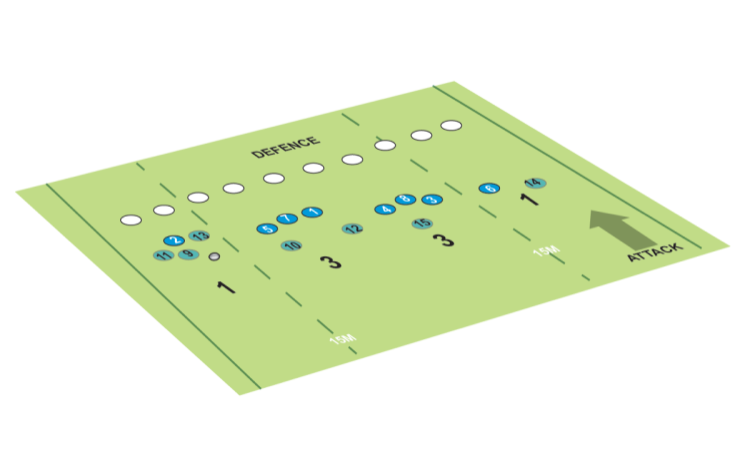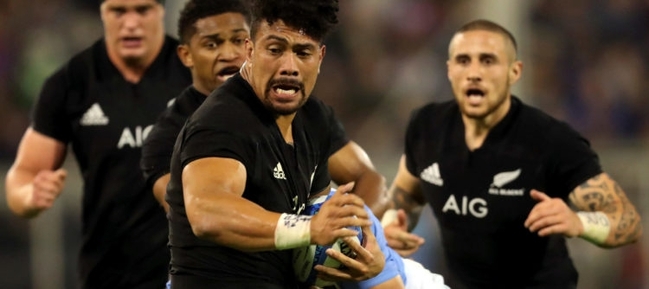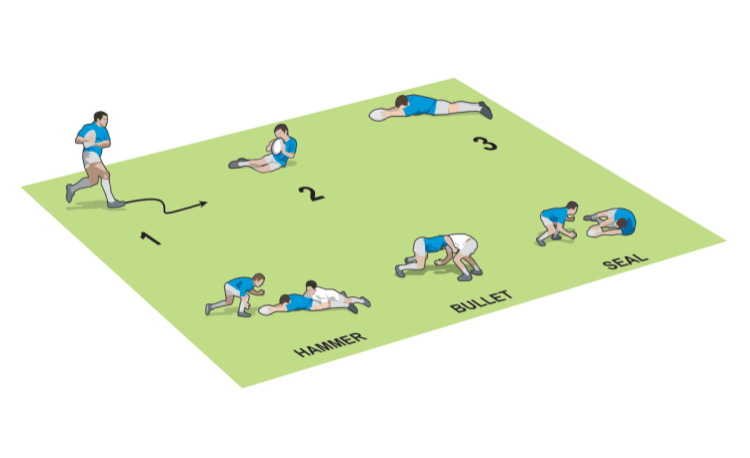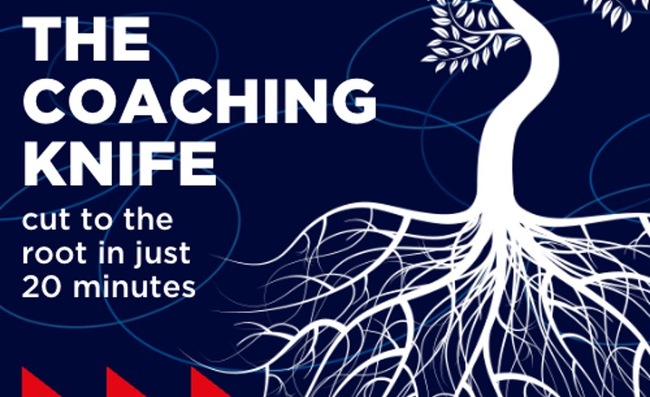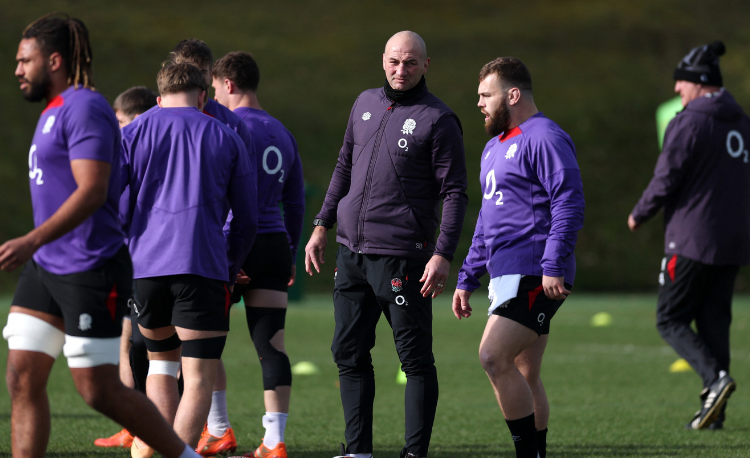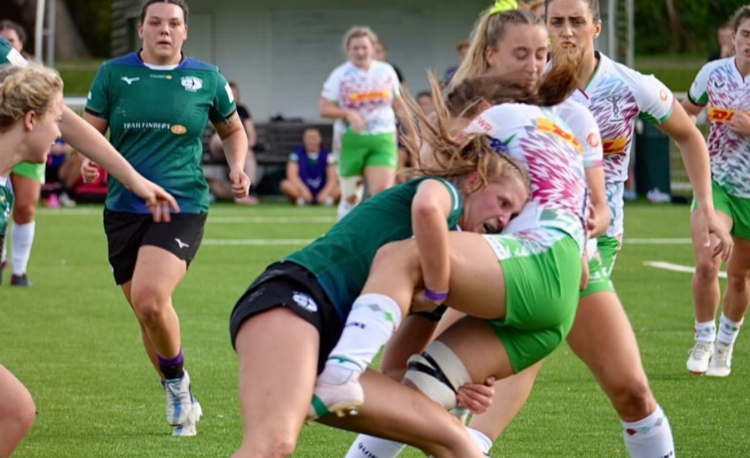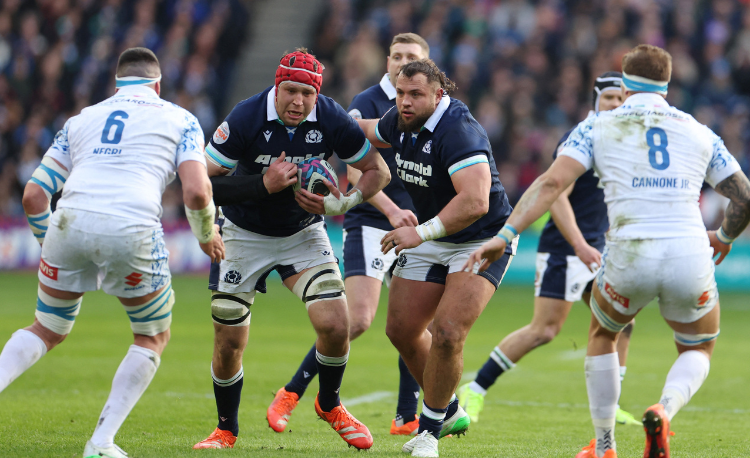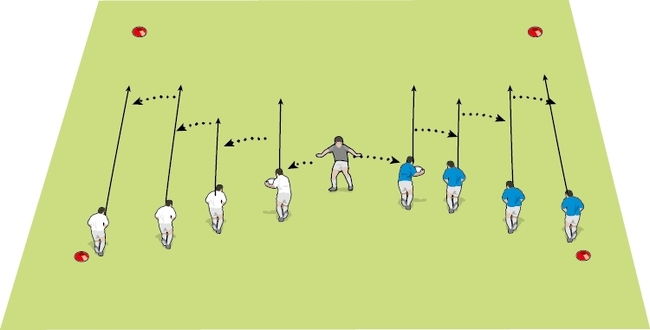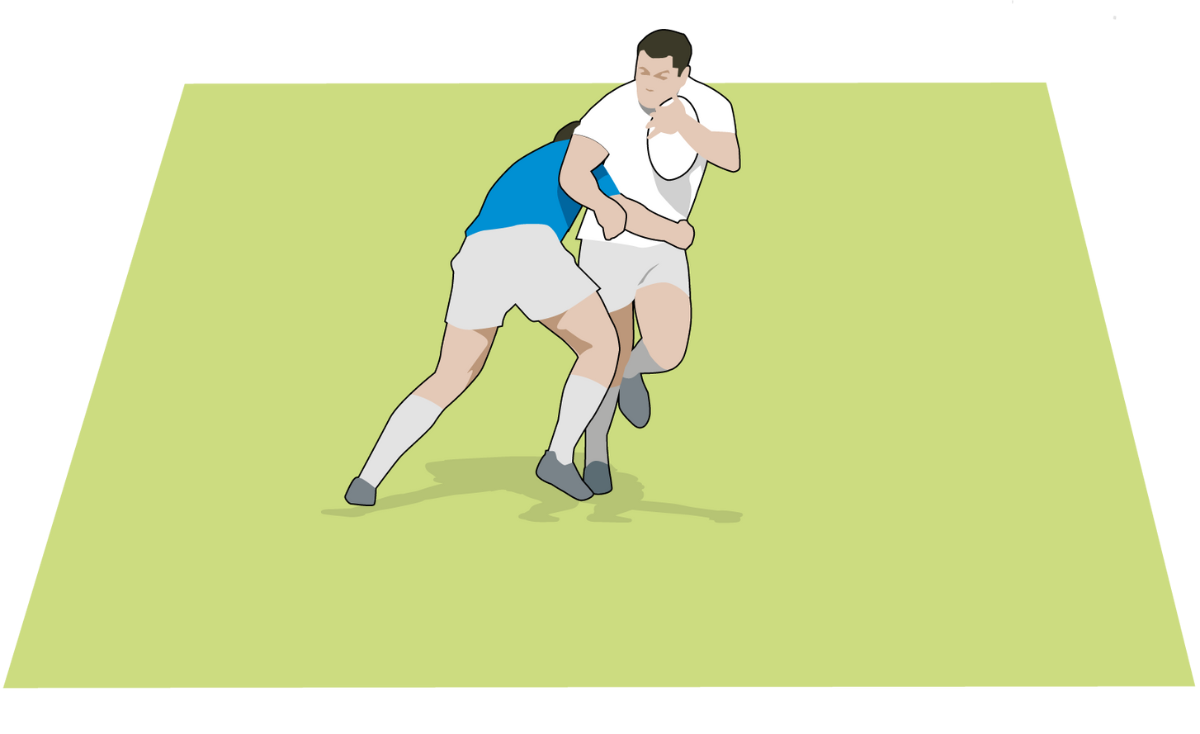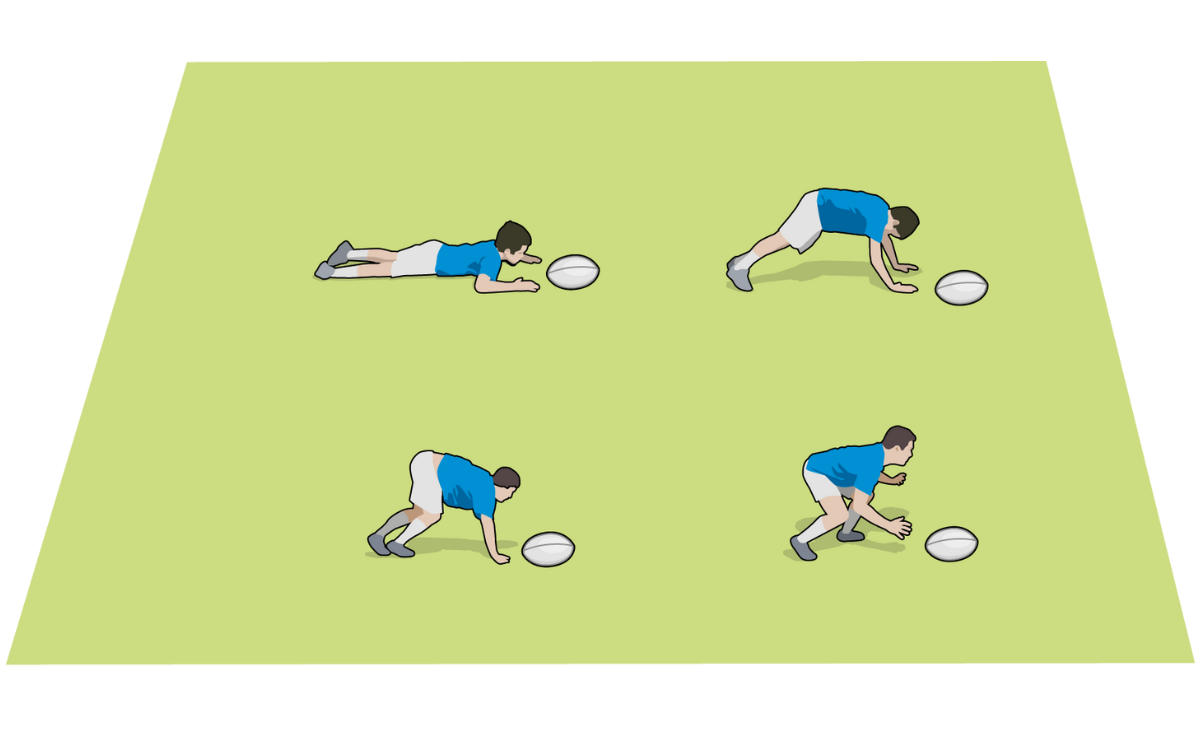Using a 2-4-2 system
By JOSH BARLOW, rugby head coach & programme manager at the Henley College
As with any structure, this system and associated calls must be based on your playing philosophy and the strengths and weaknesses of your team.
The system set-ups are not exhaustive and have to be adapted to suit the situation.
You also need to consider how you transition from attack to defence. Normally I would expect three players to return to their defensive shape within the phases.
A 2-4-2 allows for improved ball security due to almost always having three players at the breakdown.
The forwards don’t have to work quite as much off the ball as it finds them through the use of the ball in passing and width. However, they can also be used for decoy options.
The basic shape
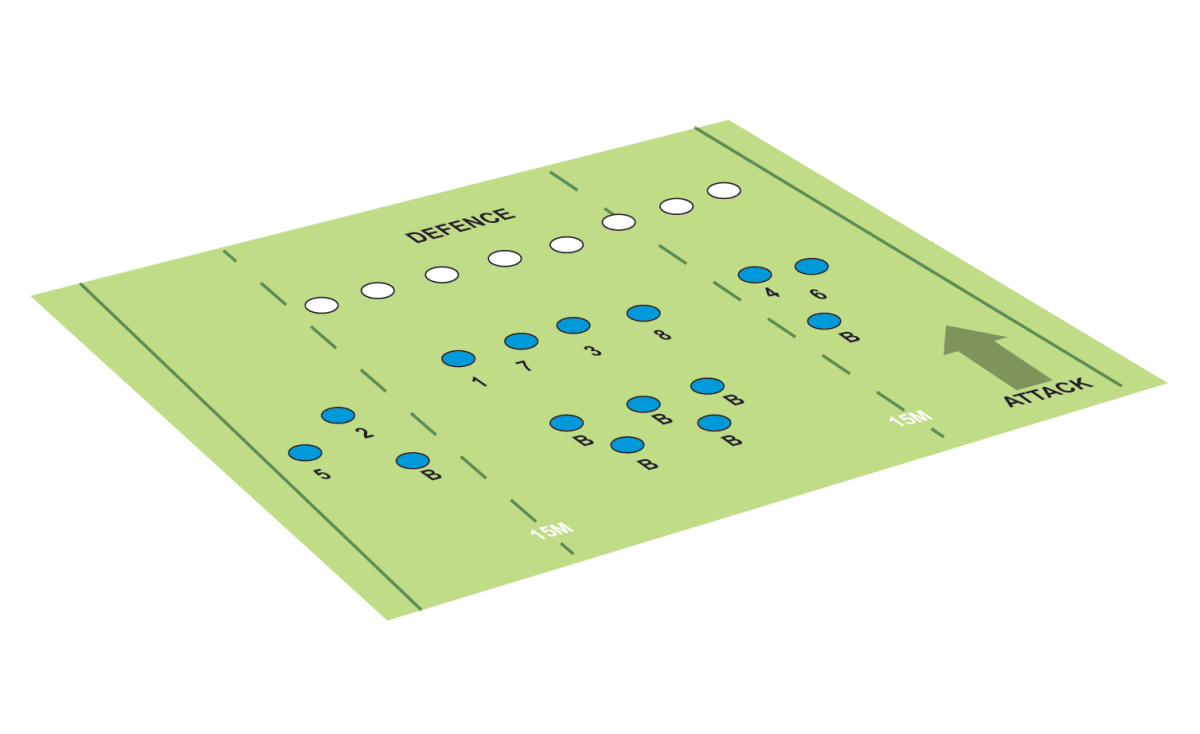
Two forwards stand in each of the 15m channels at the side of the pitch, and four stand in the middle channel. When the system is up and running, two backs will stand between the pods to link the pods - for example, 10 and 12.
The options of the midfield four
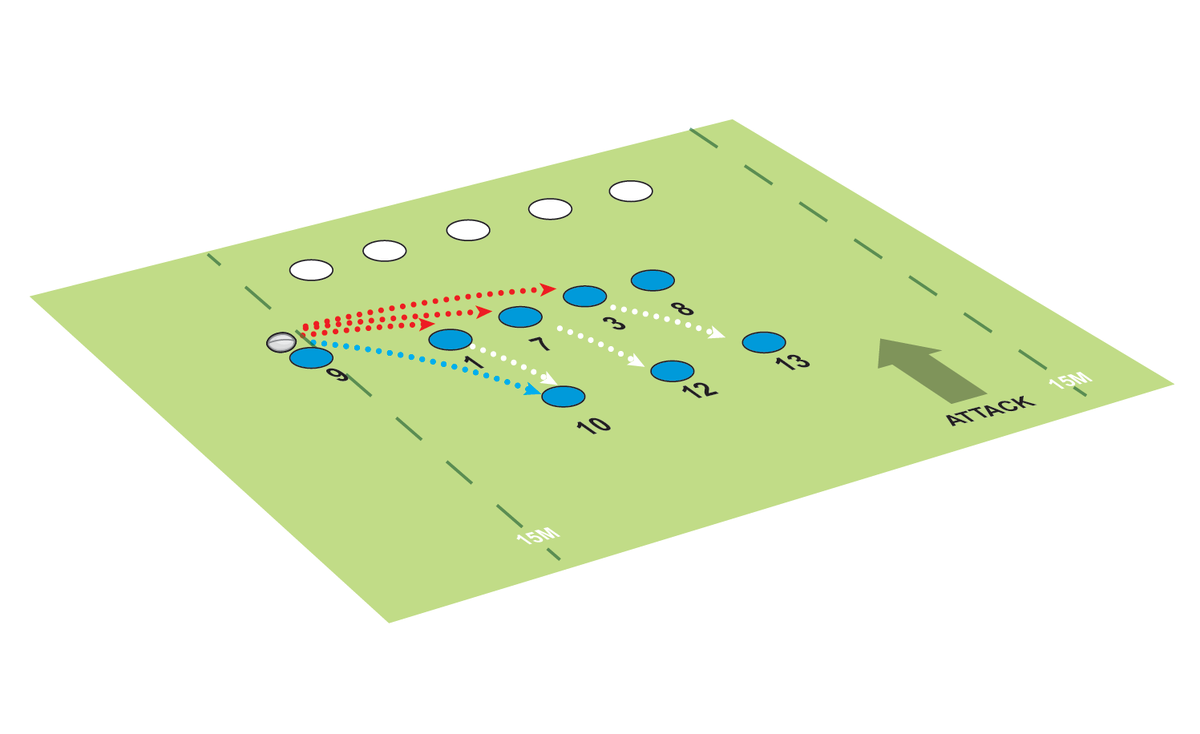
For this example, the calls will be ’Red’, ’White’ and ’Blue’, interlinked. This is indicated in the arrows which dictate the direction of the ball.
’Red’ is a pass from 9 to one of the four forwards with various options dependent on the defence.
’Red-White’ is a pass to one of the four forwards with a pull-back to a link player to hold the defenders and create width.
’Blue’ is a pass straight to link player as an exit option or if the four forwards wish to run through and the backs wish to run a set move.
Options for the 15m channel players
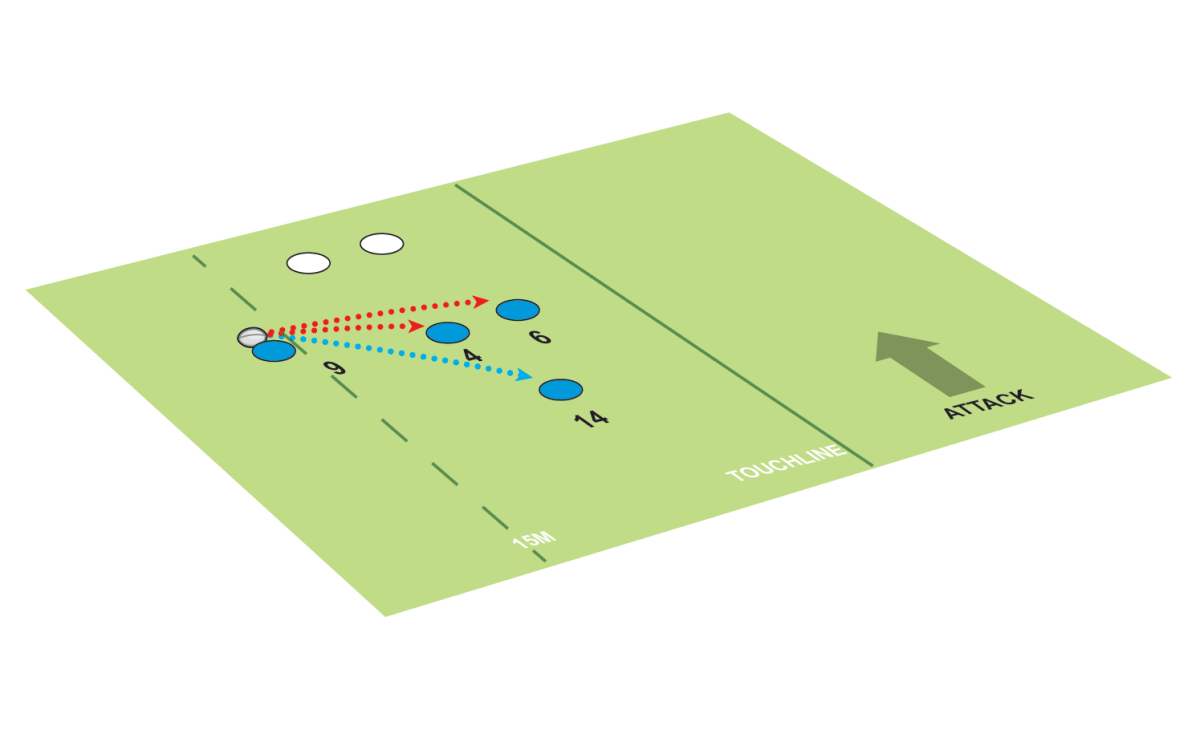
For this example, the calls will be ’Red’ and ’Blue’. This is indicated in the arrows, which dictate the direction of the ball.
’Red’ is a pass from 9 to one of the two forwards in the 15-metre channel with various options dependent on the defence.
’Blue’ is a pass straight to a winger as another option. The wingers should be roaming within the 15m channels and could be the first receiver.
Plays from an open play breakdown
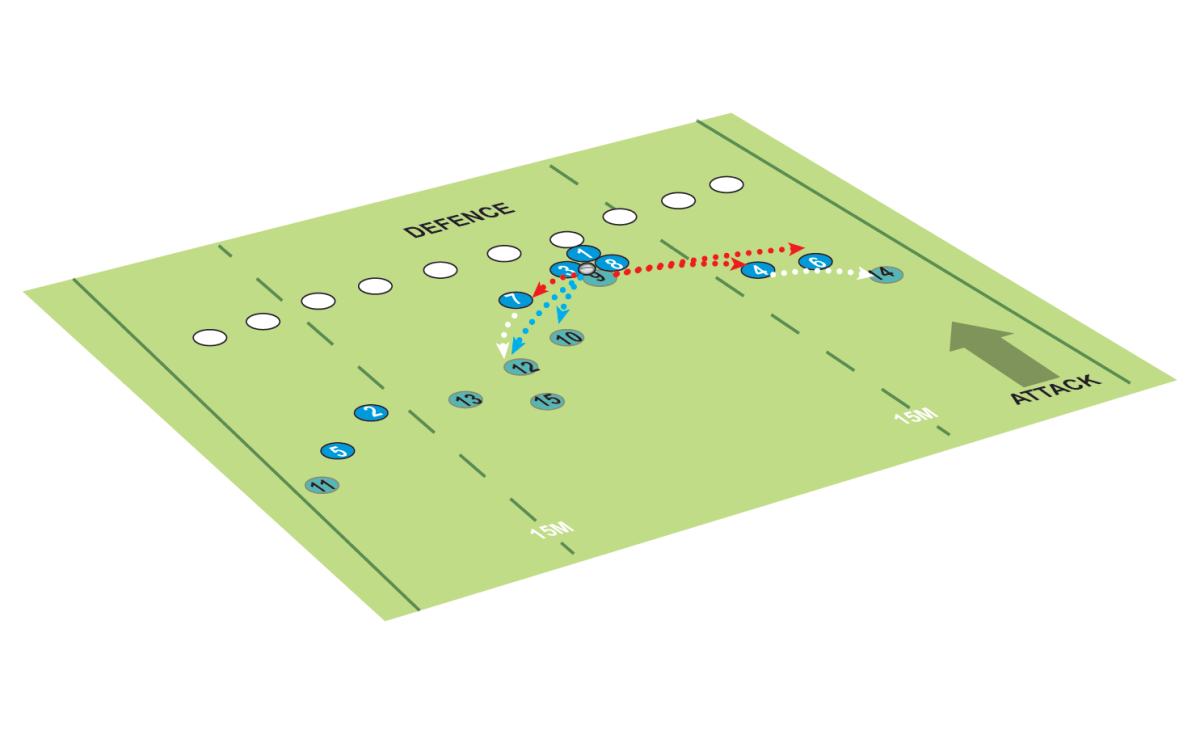
In this example, we can see the middle pod has secured the ball. The 7 can stay out as the next option or assist with the next breakdown.
’Red’ is a pass from 9 to one of the forwards with a variety of options dependent on the defence.
’Blue’ is a pass from 9 straight to a link player as an exit option or if backs wish to run a set move or to create width.
’Red-White’ is a pass to a forward with a pull-back to a link player.
’Red-Blue’ is a pass to the 4 who looks to run a slider to create the 2v1.
Lineout transition
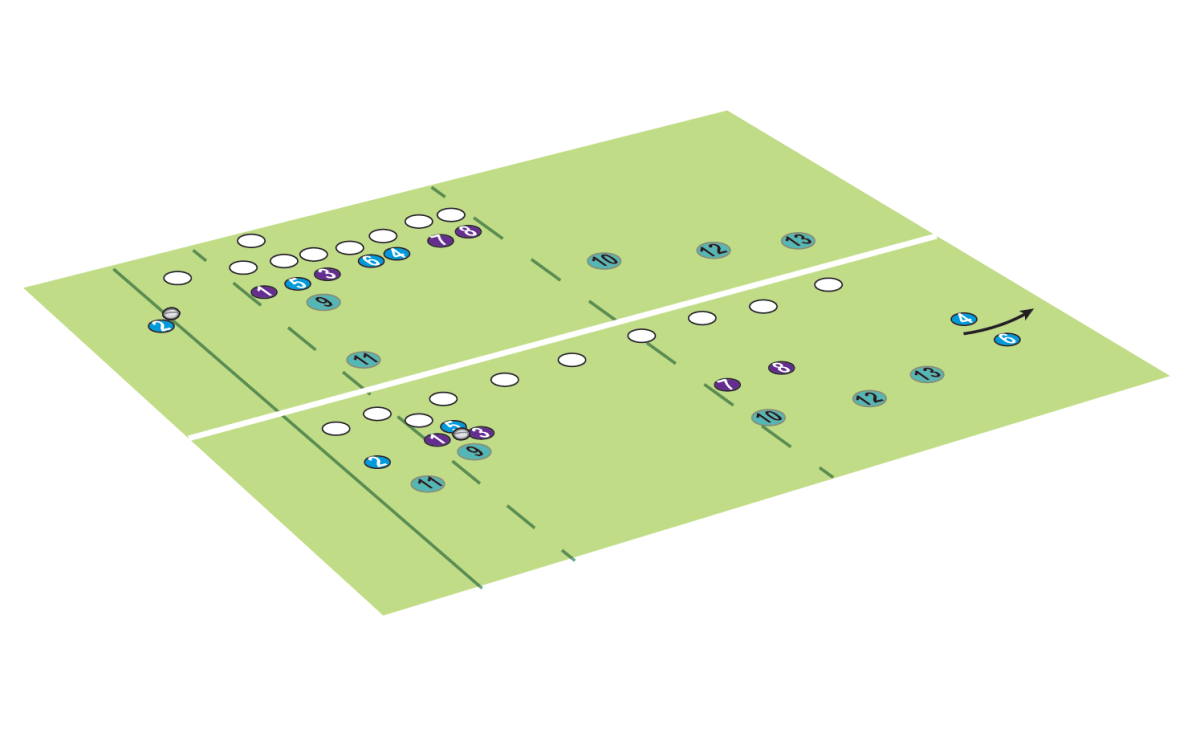
Here is a basic eight-person lineout with a standard backline.
The lifting pod has been stopped by a defender, which has created a ruck.
The 2 has moved into their 15m channel.
The 7 and 8 have moved into their roles as per 2-4-2.
The 4 and 6 have begun to make their transition into their wider 15m channel.
Scrum transition
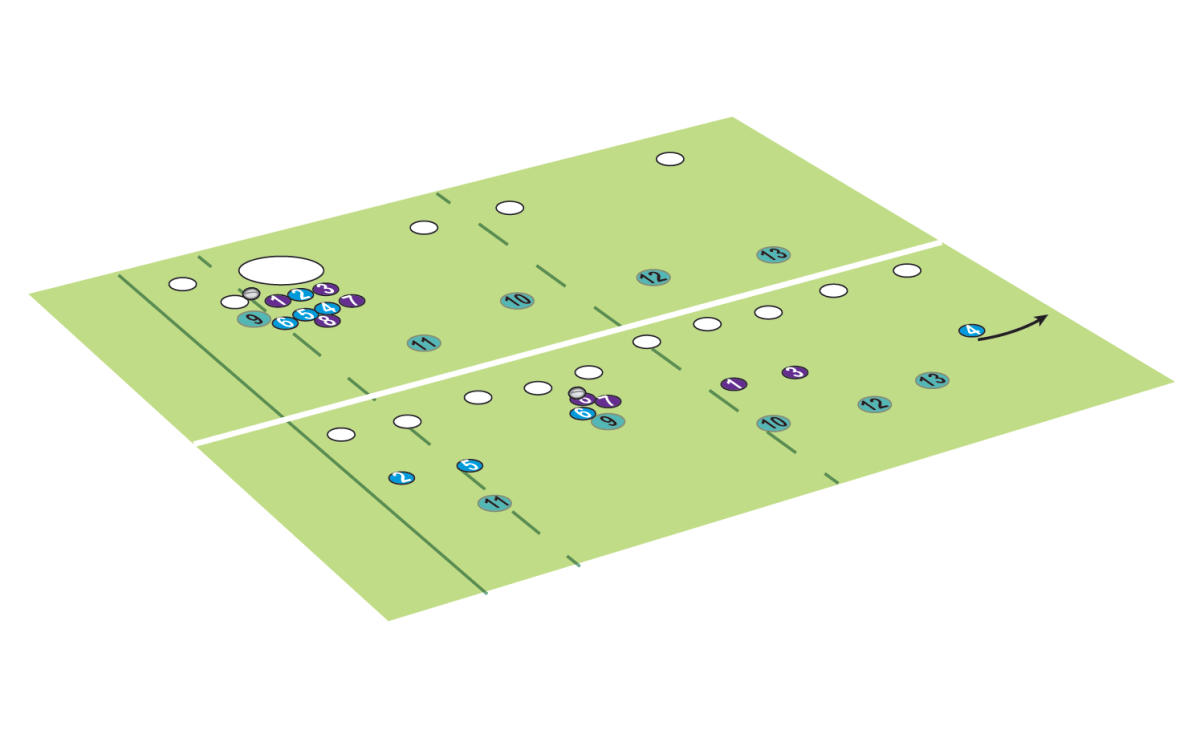
Here is a basic scrum transition from a scrum on the 15m line.
8 has picked from the base of the scrum with 6, 7 and 9 supporting. This could be 6 or 9 passing for the next phase.
Upon moving away from the scrum 2, 5 have dropped into their nearside channel and 4 has made their way over to the far 15m channel.
1 and 3 would move into the middle channel as an option for the next phase.
Kick-off set-up

The set-up is ultimately a 2-4-2 for the forwards so they are in the attacking position ready to play.
The players are a little further back from the 10m line so they can run onto the kick without losing momentum. It also gives them time to read the flight of the ball and generate a jump if required.
Ideally, each player has a pull-back option so if they have time for a player to be passed back to either for another runner or the clearance option.
The set-up might change if you are considering lifting pods.
Related Files
Newsletter Sign Up
Coaches Testimonials

Gerald Kearney, Downtown Las Vegas Soccer Club

Paul Butler, Florida, USA

Rick Shields, Springboro, USA

Tony Green, Pierrefonds Titans, Quebec, Canada
Subscribe Today
Be a more effective, more successful rugby coach
In a recent survey 89% of subscribers said Rugby Coach Weekly makes them more confident, 91% said Rugby Coach Weekly makes them a more effective coach and 93% said Rugby Coach Weekly makes them more inspired.
Get Weekly Inspiration
All the latest techniques and approaches
Rugby Coach Weekly offers proven and easy to use rugby drills, coaching sessions, practice plans, small-sided games, warm-ups, training tips and advice.
We've been at the cutting edge of rugby coaching since we launched in 2005, creating resources for the grassroots youth coach, following best practice from around the world and insights from the professional game.
